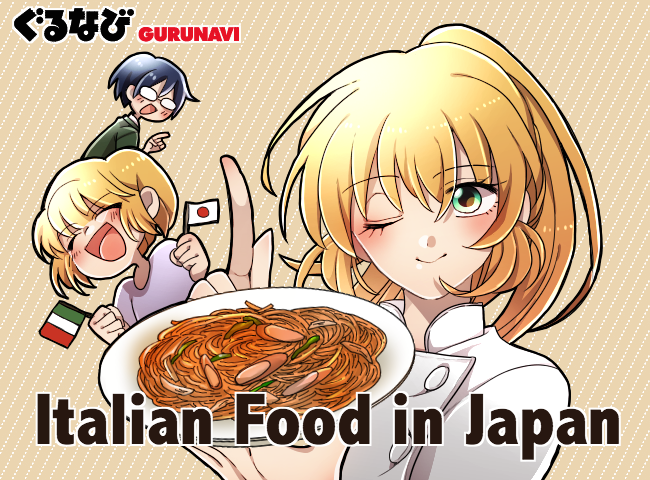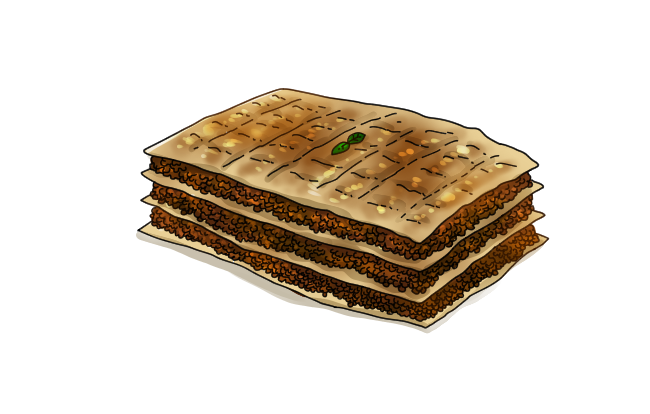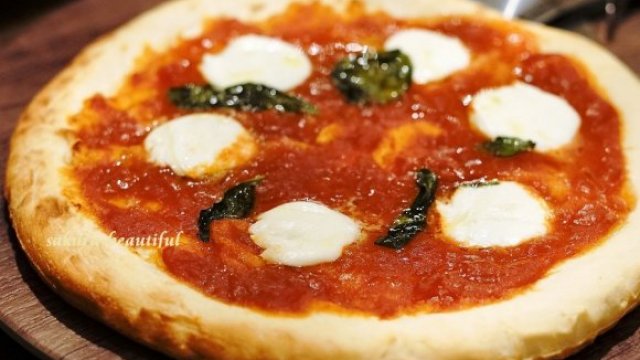9 Types of Italian Food in Japan: Pasta, Pizza and Beyond


Italian food in Japan really got its start during the post-war years, as American GIs had brought with them the Italian-American dishes of home, and former prisoners of war stayed in Japan and opened Italian restaurants. Japanese chefs with a piqued interest in Italian cuisine began to travel to Italy to study, bringing back with them authentic dishes and techniques.
These days, authentic Italian food, as well as Japanese-appropriated dishes can be found across Japan. Trattorias and specialty pizza restaurants serve classic dishes, and Japanese-Italian fusion meals can be found at Italian-style chain restaurants, family restaurants, convenience store meals, cooked in homes, wine bars, and on the menus of many izakaya. Here are some tantalizing tastes that will definitely make you want to try Japanese Italian food.
9 Popular Varieties of Italian Food in Japan
Pasta

With the country’s long history of noodle eating, it’s hardly surprisingly that pasta was readily adopted and is now a staple of Italian food in Japan. The Japanese attention to detail means that pasta is always cooked al dente, and sauces are generally subtly flavored, which is more similar to authentic Italian style than American-Italian with its heavy, rich sauces. There is even a category of pasta known as wafu, Japanese-style Western pasta. Some popular wafu pasta ingredients include mentaiko (cod roe), uni (sea urchin), natto (fermented soybeans), umeboshi, shiso leaves, seaweed, and condiments like yuzu (Japanese citrus) zest and soy sauce. And yes, you can even find pasta commonly eaten with chopsticks!
Read more: 12 Types of Wafu Pasta (Japanese-Style Pasta)
Pizza

Again, the meticulous attention to detail in Japanese cuisine results in pizzas reminiscent of their Napoli home - thin, soft bases with a perfectly puffed crust and fairly simple toppings. While more authentic pizzas are found at specialty pizza restaurants, there are some interesting fusion-style pizzas at Japanese-Italian food chains, bars, izakaya and even modern kappo restaurants. Bases may be traditional wheat bases, or made from mochi (Japanese rice cakes), for a crispy, chewier base. On top of a cheese or tomato base, some popular local toppings for pizza include karasumi (dried mullet roe), shirasu (baby sardines), Hokkaido snow crab, Japanese maitake mushrooms, sakura ebi (tiny dried prawns), tsukudani kombu (soy-caramelised kombu seaweed), goya (bitter melon), shirako (cod milt). Pizzas may often come served with Tabasco hot sauce, creating a unique and spicy flavor combination.
Read more: 13 Unusual Japanese Pizza Toppings
Risotto

Because rice is a staple in Japan, risotto was a foreign food import that was readily adopted into Japanese cuisine. In Italy, the traditional rice used to make risotto is arborio, a starchy short-grain rice that can absorb a lot of moisture and gives risotto its creamy consistency. Japanese sushi rice is similar in structure to arborio, which means it is also ideal for making risotto. Risotto is also often eaten with elements of Japanese-Italian fusion. To add a little local flavor, dashi may be used in place of consomme, sake in place of white wine, and miso in place of salty parmesan cheese. Feature ingredients also differ, with popular combinations including Japanese oysters and blue cheese, pesto topped with shirasu and soy milk and yuzukosho (yuzu citrus pepper).
Bagna Cauda

Bagna cauda is featured on the menu at many Italian restaurants in Japan as well as bars. It is a classic Italian starter of freshly cut, uncooked vegetables served with a rich anchovy-based dipping sauce. The salty, fishy, umami flavor of anchovies fits well with the Japanese flavor profile, and the vegetables reflect healthy-eating emphasis of Japanese cuisine. The vegetables may differ, but commonly include radish, cherry tomatoes, daikon, asparagus, carrot and cucumber—and are a way for a restaurant to profile local produce or the produce of a farmer they have a connection with.
Carpaccio

Traditional carpaccio is an Italian dish of thinly sliced raw beef laid elegantly on a plate and topped classically with ingredients like olive oil, parmesan cheese, white truffle, lemon juice and capers. Modern carpaccio in Italy—and in other countries where it has been adopted around the world - may be other meat, such as veal or venison, or seafood. With a long history of eating raw seafood, the only change required to make it into a Japanese-Italian food was to transition sashimi into carpaccio was to slice it even thinner, and dress the raw seafood before serving. In Japan, common types of seafood found served carpaccio-style are buri, hamachi, octopus, bonito and scallops. Popular dressings include Japanese ingredients such as sudachi (a native Japanese lime), shiso, wasabi, umeboshi (pickled plums), sansho pepper, and soy sauce, along with a drizzle of olive oil.
Antipasto

Antipasto means “before the meal” in Italian, and it is a shared platter of mixed small bites such as cured meats, marinated vegetables, cheeses, herbs, anchovies and olives that commonly served throughout Italian restaurants in Japan. Japanese antipasto platters feature the same types of food as it would in Italy, as well as some unique variants, also often showcasing local produce as well. Hokkaido crab, edamame, Japanese nama hamu (cured ham), korokke (a Japanese version of French croquette), Hokkaido cheese, Okinawan pork roast ham, and smoked Ise Island duck are just a few examples.
Lasagne

Pasta and pizza are mainstays of Italian food in Japan, but lasagne is somewhat less common. While traditional Italian-style lasagnes can be found, with layers of pasta sheets, bolognaise sauce and bechamel, Japanese lasagne often have several key differences. They often come baked in single-serve dishes rather than in a large dish and cut into smaller pieces, and feature alternative ingredients such as white fish in cream sauce. Additionally, instead of standard wheat-based pasta sheets, pasta sheets are sometimes made from mochi.
Nama Ham Salad

Nama ham salad is a staple in Japanese-Italian fusion and family restaurants. Nama means raw in Japanese, even though nama ham is technically cured rather than raw. It is similar to an Italian cured meat like prosciutto, and is easily found in supermarkets and even convenience stores. Nama ham salad usually features fresh lettuce leaves, powdered Parmesan and thinly sliced onion topped with paper-thin slices of nama ham. It is usually dressed with a wafu-style dressing, such as soy sauce whisked with olive oil and sesame seeds, or lemon juice with mirin, rice vinegar and oil.
Gelato

Although dairy is not a part of the traditional Japanese diet, the push for a more Western diet during the Meiji Era from the late 1800s and the growth of Hokkaido’s dairy scene have made dairy products like ice cream commonplace. Along with other main dishes, the scope of Italian food in Japan has also been enriched by desserts like gelato. Flavors vary hugely, and in addition to traditional Italian flavors like vanilla or cocoa, Japan offers matcha, black sesame, tofu sweetened with honey, Okinawa basil and cheese, and sake kasu (lees).
Italian Restaurants in Japan Offer Food Fusion and Variety
It may seem like an odd concept to come to Japan to eat Italian food, but besides being tasty, it provides insight into the daily diet of Japanese, as well as Japanese food culture and history. Of course, with the great variety of Italian restaurants in Japan showcased on Gurunavi, you’ll never run out of delicious options!



